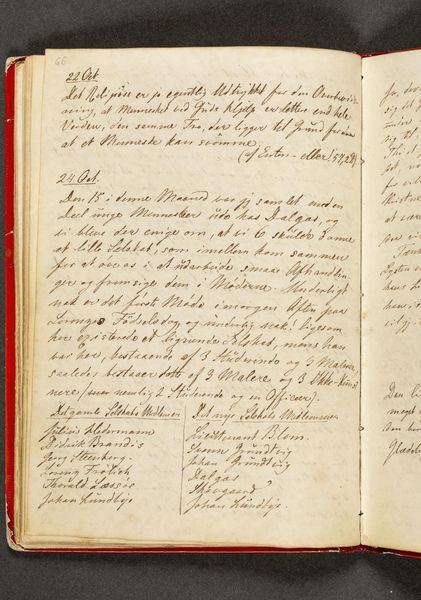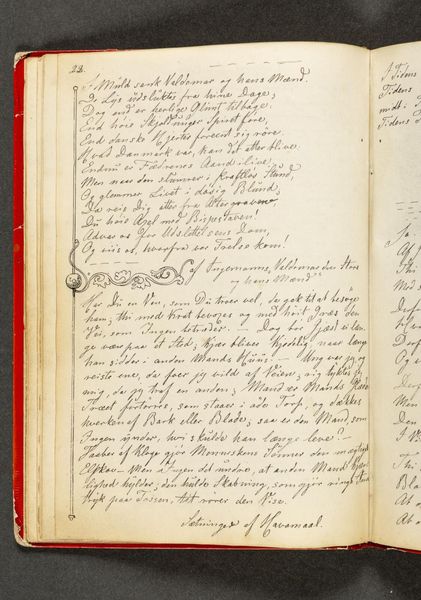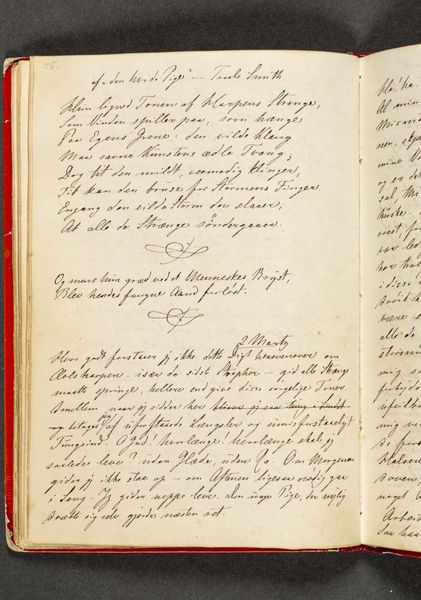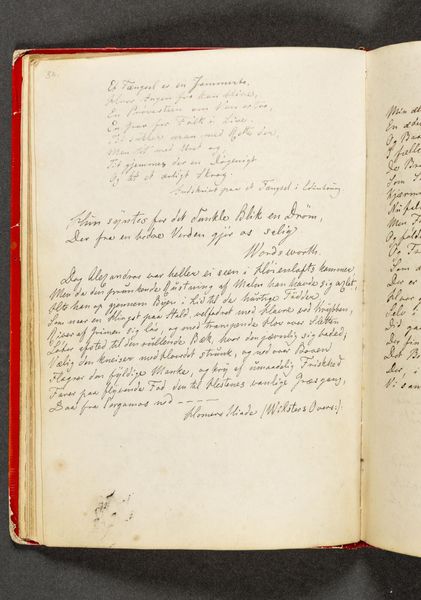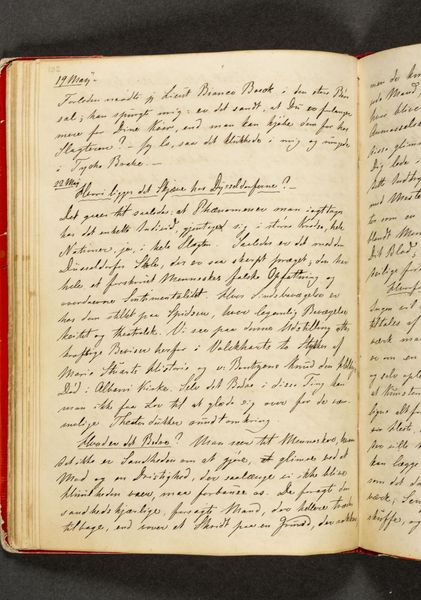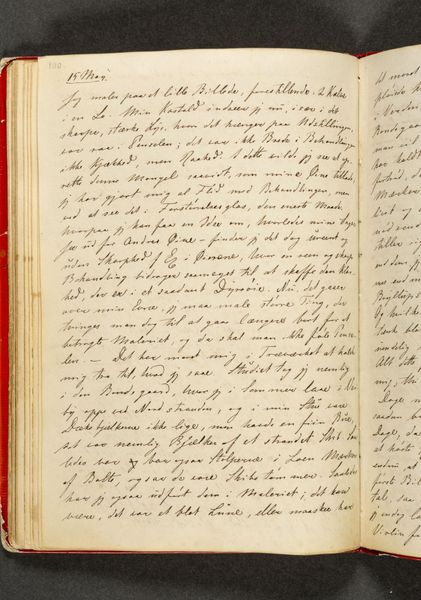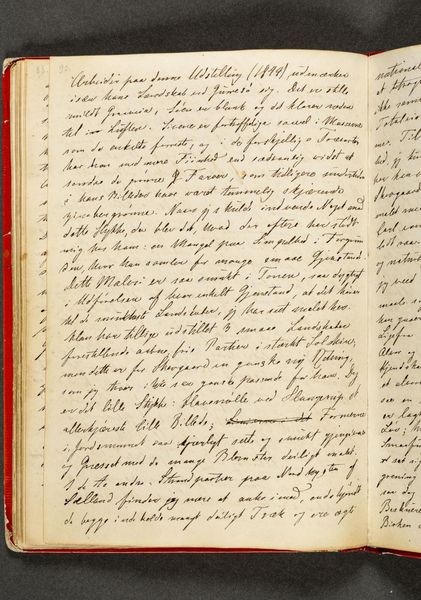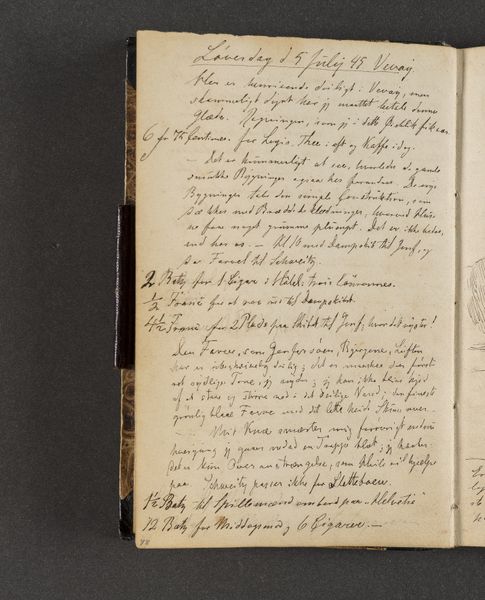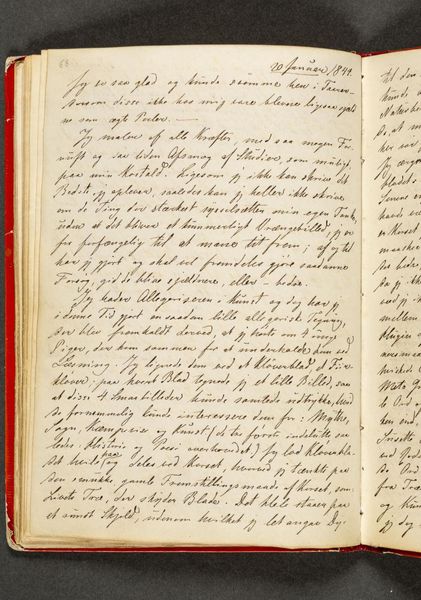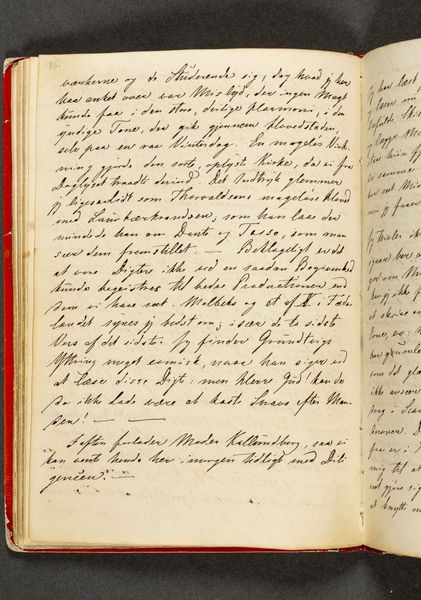
drawing, paper, ink, pencil
#
portrait
#
drawing
#
paper
#
ink
#
romanticism
#
pencil
Dimensions: 192 mm (height) x 133 mm (width) (bladmaal)
Editor: Here we have Johan Thomas Lundbye's "Dagbog. Side 74" from 1844, created with ink and pencil on paper. It looks like a page from a diary. The handwriting gives it an intimate, personal feel, but I can't read it, of course. What stands out to you when you see this page? Curator: Immediately, I see this as more than a personal note. Lundbye's decision to meticulously record thoughts and observations speaks to the burgeoning Romantic movement. The diary becomes a site where internal experience and external reality collide. Consider the power dynamics at play – the artist documenting their world, filtering it through a subjective lens. What biases or cultural assumptions might shape this representation? Editor: So it's not just about what he’s writing, but the act of writing itself? Curator: Precisely. And what is deemed worthy of documentation. Who gets to record history? Who is absent from this personal yet public account? Even in its seeming simplicity, a diary page can reflect broader societal narratives related to class, privilege, and representation. Does Lundbye record nature without people in it, for example, and if so, what could this preference for non-human elements represent? Editor: That's a really interesting perspective. I was just thinking about the texture of the ink, but I hadn't considered its social implications. I now understand the social implications of what we do (and do not) consider worth writing down. Curator: Exactly! Approaching art from this critical perspective opens doors to understanding its engagement in social issues.
Comments
No comments
Be the first to comment and join the conversation on the ultimate creative platform.
